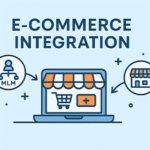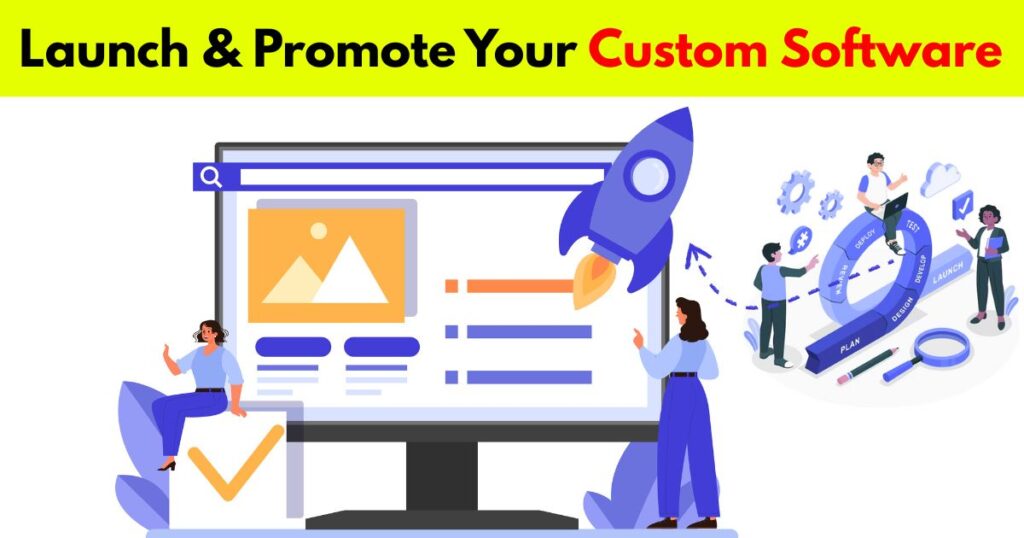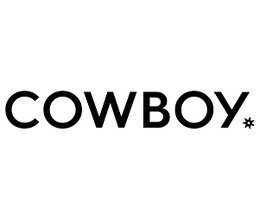Launching a custom software product is a major achievement, but it marks only the beginning. To ensure the software reaches its intended users, a carefully structured promotion strategy is necessary. A recent report by Gartner states that 45% of new software products fail to meet adoption targets due to poor market visibility. Additionally, a 2024 McKinsey survey revealed that 38% of business decision-makers abandon enterprise software trials due to lack of post-launch communication. These numbers highlight the need for robust promotion tactics, particularly for products developed by a Custom Software Development Company.
Promoting a custom software product requires technical knowledge, understanding of user behavior, and strategic planning. Below is a comprehensive guide covering the technical and informational aspects required for effective promotion.
1. Create Technical Product Documentation
Proper documentation improves adoption, especially for technical users and decision-makers. Clear, concise, and structured documentation enables seamless onboarding.
Key Elements of Documentation:
- Installation guide (including dependencies and environment setup)
- API references with example requests and responses
- Troubleshooting and FAQs
- User roles and permissions
- Version control and changelog logs
Example: Stripe’s developer documentation is often cited for clarity and usefulness, contributing to its widespread adoption.
2. Publish a Product Knowledge Base
A knowledge base helps customers resolve issues independently. It also reduces dependency on customer support.
Recommended Content:
- Step-by-step guides for all major features
- Configuration settings
- Video tutorials and GIF walk-throughs
- Error resolution documentation
Use structured data (schema.org/FAQPage) to make content discoverable in search results.
3. Build a Technical Blog Series
Create a blog series that explains the product’s purpose, architecture, and usage.
Blog Series Ideas:
- Why we built this software: Business case and industry problem
- Under the hood: Architecture choices and frameworks
- Real-world use cases from early adopters
- Comparison posts vs existing tools
- Performance benchmarks and load testing results
This content builds technical credibility and SEO visibility.
4. Submit to Developer and Product Communities
Technical users often rely on trusted communities for recommendations.
Suggested Platforms:
- GitHub: Host an open or freemium version
- Product Hunt: For early traction and visibility
- Indie Hackers, Hacker News, and Dev.to: Share launch posts
- Stack Overflow: Create tag and answer FAQs
Ensure the launch message is informative and avoids commercial tone.
5. Offer a Free Trial With Minimal Setup
A low-friction trial increases the chance of user exploration. Avoid complex deployment steps for initial access.
Best Practices:
- Provide cloud-hosted demo instances
- Allow GitHub or Google login
- Pre-fill trial with sample data
Example: Notion’s onboarding includes sample templates to showcase immediate value.
6. Reach Out to Industry Influencers and Tech Bloggers
Earned media builds trust. Engaging with subject matter experts helps gain visibility among a target audience.
Steps to Take:
- Identify bloggers who cover your domain
- Provide early access in exchange for a review
- Offer technical interviews or AMAs
- Encourage YouTube tutorials or live walk-throughs
Ensure all outreach is personalized and technically relevant.
7. Integrate With Complementary Software
Integration can extend the product’s utility and increase discovery.
Examples:
- CRM integrations (e.g., Salesforce, HubSpot)
- Communication tools (e.g., Slack, Microsoft Teams)
- Cloud storage (e.g., Dropbox, Google Drive)
Highlight these integrations on the product website and documentation.
8. Attend and Present at Developer Conferences
Direct engagement with the developer community creates meaningful exposure.
Actionable Formats:
- Conduct workshops on how the product solves specific challenges
- Submit talks showcasing architecture decisions
- Host live demos with open Q&A sessions
Example: HashiCorp gained early traction through consistent presence at infrastructure conferences.
9. Create Comparison Pages and Technical SEO Content
Potential users search for comparisons and alternatives.
Technical SEO Tactics:
- Pages like “[Product] vs [Competitor]”
- Keywords like “best software for [use case]”
- Structured data for FAQs and review snippets
Tip: Use table-based comparisons to improve readability and SEO value.
|
Feature |
Your Product |
Competitor A |
Competitor B |
|
API Access |
Yes |
Limited |
Yes |
|
Self-Hosting Option |
Yes |
No |
No |
|
Multi-language Support |
Yes |
Yes |
Partial |
10. Collaborate With a Custom Software Development Company
A reputable Custom Software Development Company can amplify product promotion by leveraging its technical network and client base.
Benefits Include:
- Use of existing enterprise connections
- Co-branded webinars or whitepapers
- Access to a broader developer network
Ensure the collaboration focuses on technical value and application use cases.
11. Monitor Technical Feedback and Iterate Fast
Use product analytics and user feedback to inform updates.
Tools to Use:
- LogRocket or Sentry for user session recording
- PostHog or Mixpanel for feature usage tracking
- GitHub Issues or Canny for feedback collection
Create public roadmaps to maintain transparency and community trust.
12. Set Up a Developer Onboarding Portal
A structured onboarding portal supports long-term adoption.
Portal Features:
- Interactive tutorials and sandbox environments
- Developer token generation
- API explorer with live testing
This setup shortens the time from sign-up to value realization.
Conclusion
Promoting a new custom software product is a technical challenge that requires methodical planning. The process goes beyond advertising. It demands credibility, clarity, and continuous feedback. With 45% of products underperforming due to poor visibility, it is essential to approach promotion as seriously as development. A Custom Software Development Company can help by ensuring both the product and its promotional strategies align with user expectations.
Start with documentation, community outreach, and integration. Expand into technical SEO, influencer partnerships, and real-world presentations. Continually analyze feedback and optimize the onboarding experience. These steps build a solid foundation for adoption, scale, and long-term success.
Frequently Asked Questions (FAQs)
1. What are the most effective channels for promoting a newly launched custom software product?
Effective channels vary based on the target audience but commonly include:
- Developer Communities: GitHub, Stack Overflow, Hacker News, and Dev.to are ideal for technical users.
- Product Launch Platforms: Product Hunt, BetaList, and Reddit’s r/startups help with early visibility.
- Owned Media: Company blog, technical documentation, and SEO-optimized landing pages help attract organic traffic.
- Email Outreach: Targeted emails to existing contacts or potential partners work well when the messaging is technical and personalized.
- Webinars and Conferences: Hosting or speaking at industry events allows real-time product demonstrations and user engagement.
Each channel should be used with platform-appropriate content—technical, factual, and demo-rich for credibility.
2. How do you differentiate a custom software product in a saturated market?
Differentiation requires a focus on technical features and real-world use cases that existing solutions lack. This can be achieved by:
- Highlighting unique architecture choices (e.g., serverless, modular, or headless frameworks)
- Demonstrating integration flexibility with APIs or third-party services
- Providing case studies with performance metrics and ROI outcomes
- Offering self-hosting or open-source components that enhance user control
- Publishing benchmark comparisons that showcase load handling, uptime, or security
Using tables or graphs to show these comparisons visually also strengthens credibility.
3. Why is documentation important for promoting custom software, and what should it include?
Technical documentation improves onboarding, reduces support requests, and increases trust. It allows developers and decision-makers to evaluate the product without waiting on a sales demo.
Must-have components:
- Quick start guide with sample configurations
- API references with authentication instructions
- Common error handling and troubleshooting tips
- Examples of real-world implementation (e.g., curl, Postman scripts)
- System requirements and deployment instructions (cloud/on-premise)
Well-structured documentation also improves discoverability through search engines, especially when paired with schema markup.
4. What metrics should be tracked after launch to evaluate promotion success?
Tracking metrics ensures that promotional efforts are effective and aligned with business goals. Key metrics include:
|
Metric |
Purpose |
|
Daily active users (DAU) |
Indicates usage consistency |
|
Feature adoption rate |
Measures engagement with core features |
|
Trial-to-paid conversion rate |
Evaluates onboarding and value delivery |
|
API usage and error rate |
Reflects product stability and usability |
|
Source attribution |
Shows which promotional channels work |
Tools such as Mixpanel, Segment, and PostHog can provide these insights with technical accuracy.
5. How can a Custom Software Development Company contribute to product promotion?
A Custom Software Development Company plays a vital role beyond development. Its established network, expertise, and delivery history enhance trust and reach.
Contributions include:
- Publishing co-branded whitepapers or case studies
- Sharing the product with existing enterprise clients
- Assisting with technical webinars, live demos, or Q&A sessions
- Offering development support for integrations and customizations
- Providing feedback from past clients to refine messaging and features
Their involvement signals to potential users that the product meets professional development standards and enterprise-grade quality.
- Promote Your Custom Software Product | Expert Launch Guide 2025
- Learn how to promote your custom software product with expert strategies. A detailed 2025 guide by a leading Custom Software Development Company.
- custom software promotion, software product launch, promote custom software, software marketing strategies, custom software development company, software launch checklist, SaaS product promotion, developer outreach, technical product marketing, software onboarding strategies
Related posts:
 Top 5 Custom Software Development Companies in Edmonton 2025
Top 5 Custom Software Development Companies in Edmonton 2025
 Contrast Mapping for Dark Mode Accessibility in Taxi Booking Apps
Contrast Mapping for Dark Mode Accessibility in Taxi Booking Apps
 Boost Your Business with These App Development Companies in Kuwait
Boost Your Business with These App Development Companies in Kuwait
 How DevOps as a Service Accelerates Cloud Transformation for Modern Enterprises
How DevOps as a Service Accelerates Cloud Transformation for Modern Enterprises
 Retained vs. Contingent Search: Understanding the Value Dynamics Search Partners Brings to Each Model
Retained vs. Contingent Search: Understanding the Value Dynamics Search Partners Brings to Each Model
 Integrating MLM Software with E-Commerce Platforms: A Step-by-Step Guide
Integrating MLM Software with E-Commerce Platforms: A Step-by-Step Guide
 Integrating MLM Software with E-Commerce Platforms: A Step-by-Step Guide
Integrating MLM Software with E-Commerce Platforms: A Step-by-Step Guide
 The Wimbo Revolution: Transforming Real-World Friendships in 2025
The Wimbo Revolution: Transforming Real-World Friendships in 2025








